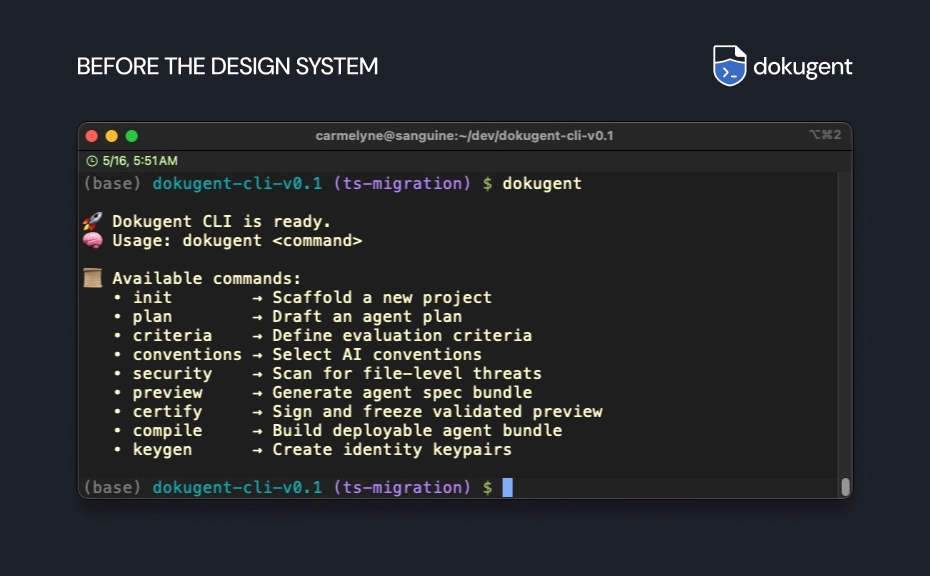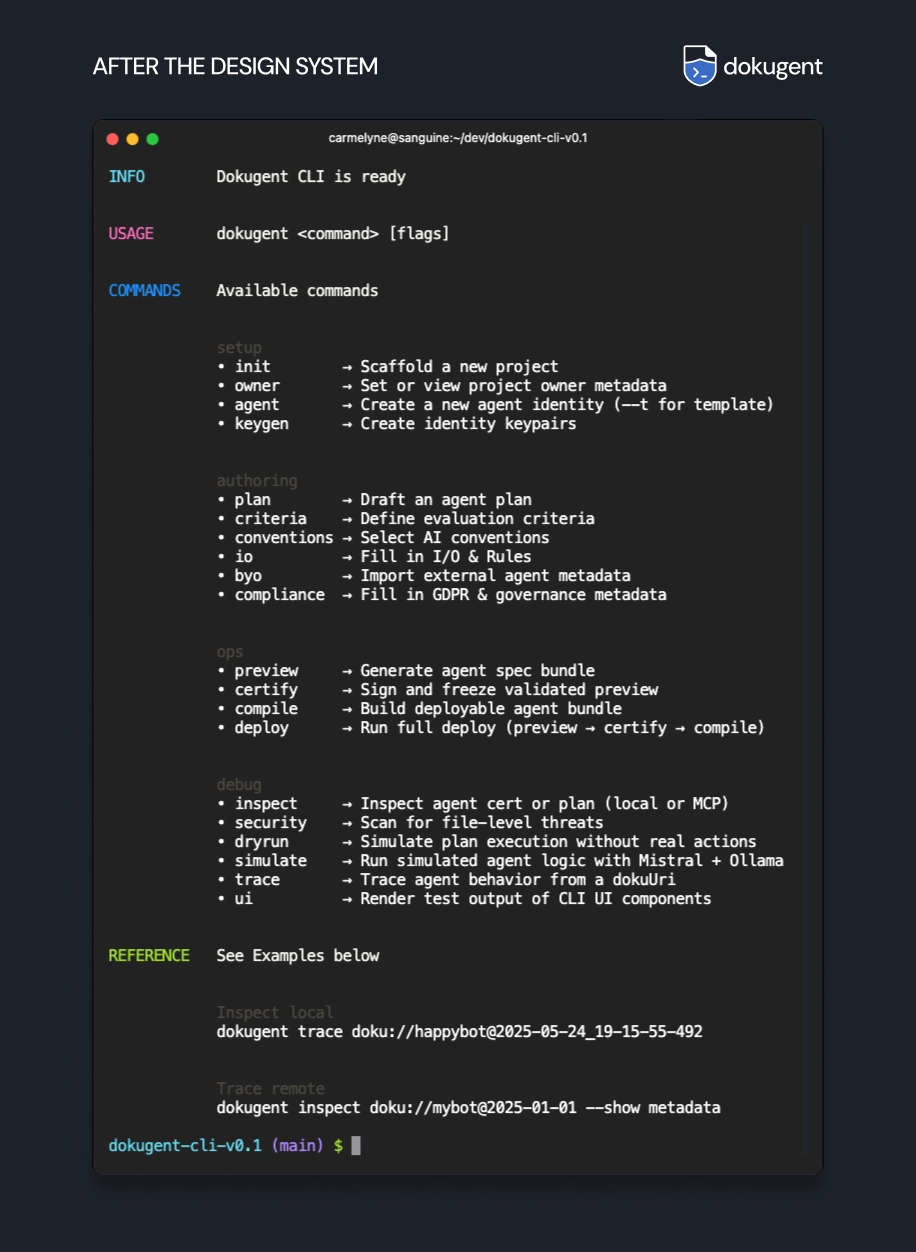Following up from yesterday’s post, this is day two of refining Dokugent’s terminal UX. After laying the foundation with glyphs and layout components in agent --ls, we’re now building a full CLI-native design system to support structured, styled, and human-readable output across all commands
🗓️ Dev Log 046 – CLI design system¶
We’re introducing a native CLI design system for Dokugent to ensure that logs, prompts, and step outputs stay legible, expressive, and consistent—no matter how complex the agent plan gets.
✅ Highlights¶
paddedLog()now supports label prefixes, tone levels, and consistent padding rulespaddedSub()enables secondary and nested information with alignment- Boxed layouts with rounded, hex, and square borders now previewable via
dokugent ui-demo - Added step logger preview with wrapped, indented logs for step-by-step execution
- ANSI-safe styles for bold, underline, inverse, dim, and alert messages
- Glyph symbol table for use in future UI previews and formatting helpers
This forms the base for a full CLI-native design layer, helping agent workflows remain traceable and human-friendly across different output styles.
Before vs After¶
Here's a visual comparison of how far we've come:
Before the Design System

After the Design System

We replaced raw console.log dumps with styled, structured output powered by our internal design system.
From this… to this.
I used to think CLI UX just meant good logs. Then I realized: even terminals deserve a design system.
Dokugent CLI now ships with: • Structured layouts • Glyph-based symbology • ANSI-safe visual hierarchies • Self-documenting CLI references
Design isn’t just for web. We build for humans—even in black boxes.